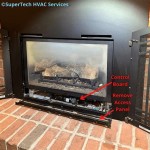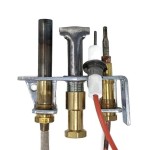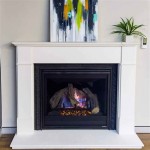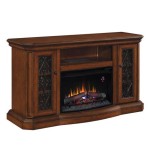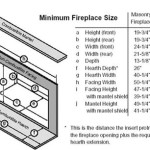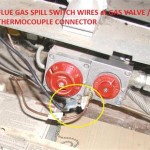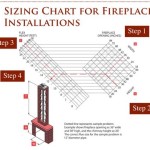Dual Fireplace: Blurring the Lines Between Indoor and Outdoor Living
The concept of a "Dual Fireplace," also sometimes referred to as a "See-Through Fireplace," "Indoor-Outdoor Fireplace," or "Peninsula Fireplace," embodies a compelling trend in modern architecture and home design. It serves as a captivating focal point that seamlessly bridges the indoor and outdoor environments. Rather than being confined to a single living space, this type of fireplace is integrated into a wall that separates an interior room, such as a living room or dining room, from an exterior space like a patio, deck, or covered porch. This configuration allows homeowners to enjoy the warmth and ambiance of a fire from both locations simultaneously, effectively extending the living area and fostering a sense of connection with nature.
The appeal of a dual fireplace extends beyond its aesthetic value; it contributes significantly to the functionality and versatility of a home. During colder months, the fireplace provides a source of heat and a cozy atmosphere for both indoor and outdoor gatherings. In warmer weather, it can serve as a subtle divider between the spaces, creating a defined outdoor living area while still maintaining a connection to the interior. Furthermore, the visual appeal of the flames adds a touch of elegance and sophistication to both the interior and exterior design, enhancing the overall property value.
The installation of a dual fireplace requires careful planning and consideration of various factors, including building codes, safety regulations, ventilation requirements, and the structural integrity of the surrounding walls. Selecting the appropriate type of fireplace, whether gas, wood-burning, or electric, is crucial, as each option presents its own set of advantages and disadvantages in terms of fuel efficiency, maintenance requirements, and environmental impact. Professional installation by qualified technicians is strongly recommended to ensure safe and efficient operation.
Enhancing the Architectural Aesthetic
One of the primary benefits of a dual fireplace is its ability to elevate the architectural aesthetic of a home. This architectural element functions as a stunning visual centerpiece, drawing the eye and creating a sense of drama and sophistication. The flickering flames become a dynamic work of art, adding depth and texture to both the interior and exterior spaces. The fireplace can be customized to complement the existing architectural style, whether it is modern, contemporary, traditional, or rustic.
For modern homes, a sleek and minimalist design with clean lines and a frameless glass enclosure can enhance the contemporary aesthetic. The use of materials such as stainless steel, concrete, or dark metal can further accentuate the modern look. In traditional homes, a more ornate design with a decorative mantel, stone surround, and classic detailing can create a warm and inviting atmosphere. Brickwork, natural stone, and wood finishes can be incorporated to complement the traditional style.
The design of the fireplace surround can also play a significant role in enhancing the architectural aesthetic. Materials such as natural stone, brick, tile, or wood can be used to create a unique and visually appealing focal point. The surround can be extended to create a feature wall that seamlessly integrates the fireplace into the overall design of the home. The use of lighting, such as recessed lighting or spotlights, can further enhance the visual impact of the fireplace and create a warm and inviting ambiance.
Furthermore, the dual fireplace can be integrated into the landscape design to create a harmonious connection between the indoor and outdoor spaces. The patio or deck can be designed with seating areas and landscaping that complement the style of the fireplace and the overall architecture of the home. The use of outdoor lighting can further enhance the ambiance and create a welcoming space for entertaining guests or relaxing with family.
The positioning of the fireplace within the dividing wall is also crucial. Careful consideration should be given to the sightlines from both the interior and exterior spaces to ensure that the fireplace is visible and enjoyable from multiple vantage points. The fireplace should be positioned in a location that maximizes its impact as a focal point and creates a seamless transition between the indoor and outdoor environments.
Extending Living Spaces and Functionality
Beyond its aesthetic appeal, a dual fireplace dramatically extends the living space of a home by blurring the boundaries between the indoors and outdoors. This spatial extension creates a more versatile and functional living environment that can be enjoyed year-round. The fireplace acts as a natural gathering point, encouraging people to spend more time outdoors, even during cooler months. The warmth and ambiance of the fire create a cozy and inviting atmosphere that makes outdoor spaces more comfortable and enjoyable.
The extended living space can be used for a variety of activities, such as dining, entertaining, relaxing, or simply enjoying the outdoors. The fireplace can be incorporated into an outdoor kitchen or bar area, creating a seamless flow between the indoor and outdoor spaces. The addition of comfortable seating, outdoor lighting, and landscaping can further enhance the functionality and appeal of the extended living space.
The dual fireplace also offers practical benefits in terms of energy efficiency. By providing a source of heat for both the indoor and outdoor spaces, it can reduce the need for separate heating systems. This can result in significant energy savings, especially during the shoulder seasons when the temperatures are milder. The fireplace can also be used to supplement the heating system during colder months, further reducing energy consumption.
Moreover, the fireplace can enhance the value of a home by adding a unique and desirable feature that appeals to potential buyers. The extended living space and enhanced architectural aesthetic make the home more attractive and functional. The dual fireplace is a relatively low-maintenance feature that can provide years of enjoyment and increase the overall value of the property.
The strategic placement of furniture is key to maximizing the usability of both spaces. Seating arrangements should allow for comfortable conversation and enjoyment of the fire from both the indoor and outdoor perspectives. Outdoor furniture should be weather-resistant and durable, capable of withstanding the elements. Indoor furniture should complement the style of the fireplace and the overall décor of the home.
Considerations for Installation and Safety
The installation of a dual fireplace is a complex project that requires careful planning and execution. It is essential to consult with qualified professionals, such as architects, engineers, and fireplace installers, to ensure that the project is completed safely and according to building codes. Building permits are typically required for the installation of a fireplace, and inspections are necessary to ensure compliance with safety regulations.
Safety is the paramount concern when installing a dual fireplace. The fireplace must be installed in accordance with all applicable building codes and safety standards. Proper ventilation is essential to prevent the buildup of carbon monoxide, a dangerous and potentially lethal gas. Carbon monoxide detectors should be installed in the vicinity of the fireplace to provide an early warning in case of a malfunction.
The selection of the appropriate type of fireplace is also crucial for safety. Gas fireplaces are generally considered to be safer than wood-burning fireplaces, as they produce fewer emissions and require less maintenance. Electric fireplaces are another safe and convenient option, as they do not produce any emissions and can be easily controlled with a remote control. However, wood-burning fireplaces offer a unique ambiance and aesthetic appeal that many homeowners find desirable.
The structural integrity of the wall that houses the fireplace must also be carefully considered. The wall must be able to support the weight of the fireplace and withstand the heat generated by the fire. Reinforcements may be necessary to ensure that the wall is structurally sound. A fire-resistant barrier should be installed between the fireplace and the wall to prevent the spread of fire.
Regular maintenance is essential to ensure the safe and efficient operation of the fireplace. The chimney should be inspected and cleaned regularly to remove any creosote buildup, which can be a fire hazard. The fireplace should also be inspected for any signs of damage or wear. Any necessary repairs should be made promptly by a qualified technician.
The choice of fuel for the fireplace also has safety implications. Wood-burning fireplaces should only be burning seasoned, dry wood to minimize emissions and creosote buildup. Gas fireplaces should be inspected regularly for any leaks or malfunctions. Electric fireplaces should be properly grounded to prevent electrical shock.
Finally, users should always be aware of the potential hazards associated with fireplaces, such as burns and carbon monoxide poisoning. Children and pets should be supervised closely when the fireplace is in use. Never leave a fire unattended. Keep flammable materials away from the fireplace. And always have a fire extinguisher readily available in case of an emergency.

Double Sided Indoor Outdoor Fireplace Heat Glo

Benefits Of Installing An Indoor Outdoor Fireplace Wyckoff

White Mountain Hearth Dvct40csp Out Rushmore Clean Face Direct Vent Double Sided Indoor Outdoor Fireplace With Log Set 40 Inches

23 Luxurious Double Sided Fireplaces Fireplace Photos

Indoor And Out No Limitations With Davinci Lopi

42 Inviting Fireplace Designs For Your Backyard Indoor Outdoor Fireplaces Home

Ideas For New House Indoor Outdoor Fireplaces Gas Fireplace Designs

Double Sided Indoor Outdoor Fireplace Heat Glo

Home Is Where The Hearth Truexcullins

Make Double The Impact With A Sided Fire

